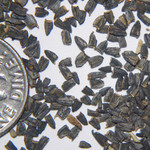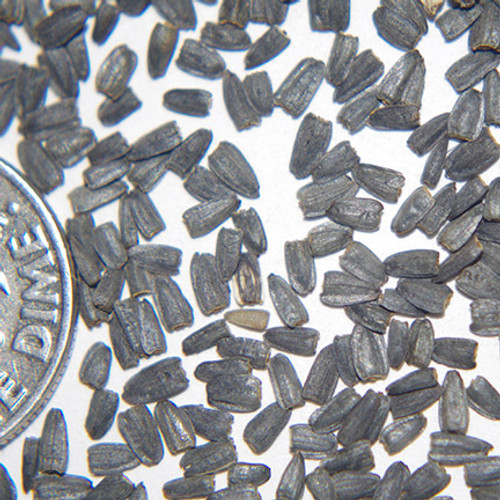Upright prairie coneflower (Mexican Hat) is a native, drought-tolerant wildflower of the Great Plains that is commonly found from south central Canada to northern Mexico, and west from Manitoba and Minnesota to southeastern Idaho. It prefers to grow in the dry, open spaces of prairie grasslands and mountain foothills and is found along roadsides, in waste and disturbed areas, and along railroad rights-of-way. Prairie coneflower does well on a variety of soil types, including loams and rocky to gravelly-sandy textures. It tolerates a pH range from slightly acidic to moderately alkaline and weak saline soils, in areas receiving 10 to 30 inches (254 to 762 mm) of annual precipitation. Prairie coneflower attains optimum growth in full sun and low to moderate levels of competition within a native plant community. This plant is a common component of such ecological sites as shallow, silty, shallow to gravel, and silty steep. Associated species include western wheatgrass, bluebunch wheatgrass, prairie Junegrass, Sandberg bluegrass, common gaillardia, white and purple prairie clover, big sagebrush, and western yarrow.
Description and Adaptation
Prairie coneflower is a native, late-season, herbaceous perennial in the Aster Family. It usually has a taproot and grows upright from a woody base to a height of 12 to 24 inches (30 to 60 cm). The numerous, pinnate leaves are deeply cut into linear or lance-shaped segments along alternately branched stems. Showy yellow ray flowers droop and surround the columnar-shaped, brown, central disk. Occasionally, the ray flowers are reddish-brown in color. The flowers tend to bloom from late June until August, with seed ripening completed in early August to September. The mature seedhead has a pleasant odor when crushed that is similar to anise or licorice. The fruit is a 1-seeded, gray-black achene.
Uses
Grazing: Prairie coneflower is palatable and nutritious to all classes of domestic livestock when utilized in early stage of plant growth and development. It is considered a desirable spring browse plant for big game animals, and the seed of prairie coneflower is preferred by several species of upland birds and small mammals. Restoration: Prairie coneflower is a medium to tall-statured forb that may fill a structural cover and nesting niche for multiple species of upland birds in a variety of plant community types. A more diverse native plant community will be attained when this species is included in native seed mixes for the rehabilitation of such disturbed sites as rangelands, minelands, roadsides, park and restoration areas, prairie restoration projects, and conservation plantings in accordance with government farm bill program requirements. Landscape: Prairie coneflower is commonly recommended as an ornamental wildflower in pollinator friendly, low maintenance, or natural landscapes. Ethnobotanic: Native peoples utilized a decoction of leaves and stems to treat pain, poison ivy rash, and rattlesnake bites. An infusion was made from plant tops to treat headache, stomachache, cough, fever, epileptic fits, and to induce vomiting. A medicinal or beverage-type tea was made from the ripened flower heads and leaves. An orange-yellow dye was produced from boiled flowers.
Establishment
Seed should be planted into a firm, weed-free seedbed, preferably with a drill that will ensure uniform seed placement depth of ¼ to ½ inch (6 to 12 mm). The processed seed of prairie coneflower has approximately 600,000 seeds/lb (1,320,000 seeds/kg). The full seeding rate is 2 lb/acre (2.2 kg/ha) pure-live-seed (PLS), but it would seldom be seeded in a pure stand. It is recommended that prairie coneflower be included as a component of a native seed mixture at a rate of ¼ to ½ lb/acre (0.3 to 0.6 kg/ha). When used in a mix adjust the seeding rate to the desired percentage of mix. Spring seeding is preferred over a dormant, fall planting date. Periodic mowing during the establishment year is one option for weed suppression.
Management
Growth of prairie coneflower begins in mid spring and flowers begin to appear in early summer. Excessive competition from other species may require removal to promote prairie coneflower establishment and longevity. Livestock grazing and wildlife browsing should be limited to avoid over-utilization during the active growing season.
Pests and Potential Problems
There are no major insect or disease pests of prairie coneflower. Stands can be reduced by powdery mildew and root and crown rot organisms.
Plant description via USDA-NRCS Plant Database, Plant Fact Sheet: Prairie Coneflower, Ratibida columnifer











